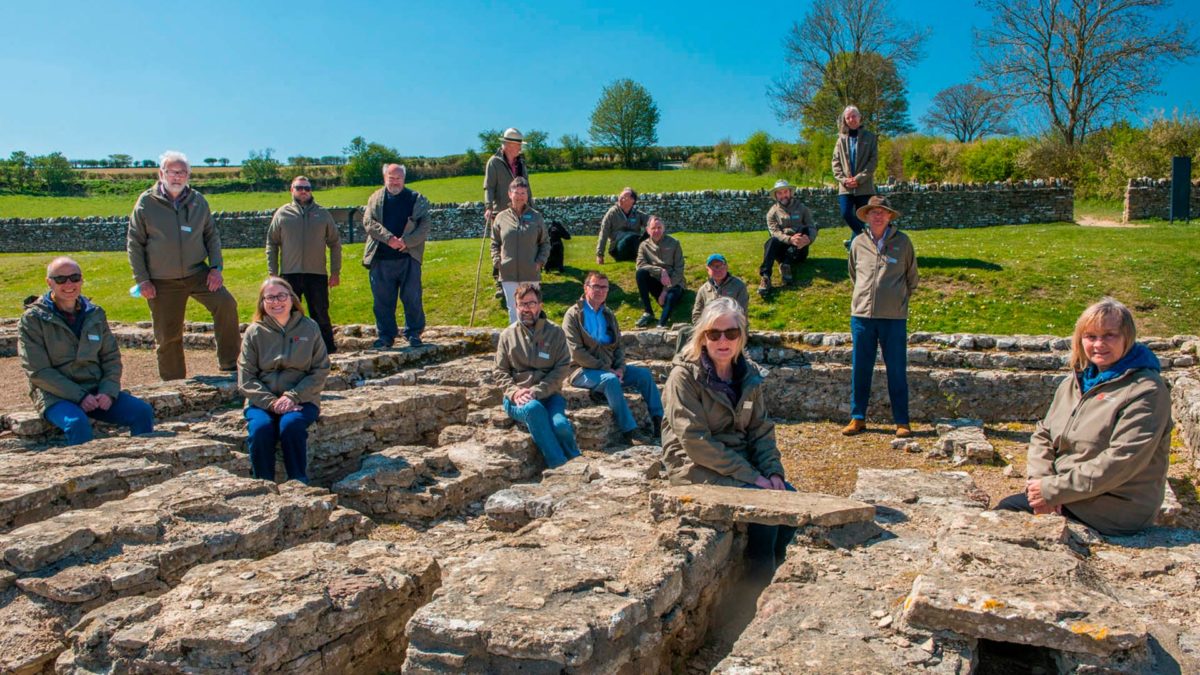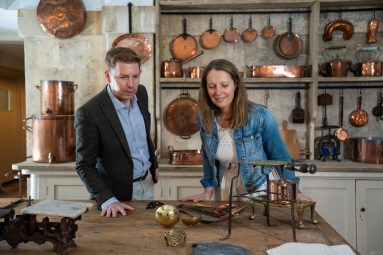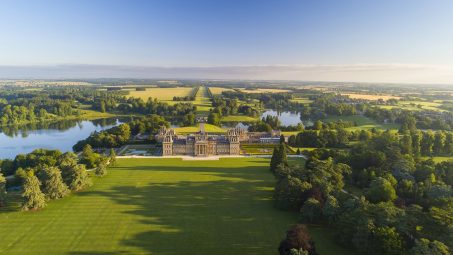
Re-discovered 200-year-old Guide Reveals Lost Treasures of one of Britain’s Most Luxurious Roman Villas
An archivist at Blenheim Palace has re-discovered a 200-year-old guide revealing the lost treasures of one of Britain’s largest and most luxurious Roman villas.
In its heyday North Leigh Roman Villa in Oxfordshire had a total of 60 rooms; including three bath suites, 16 rooms containing mosaics and 11 more with under-floor heating.
The villa remained buried for almost 1,500 until 1813 when it was excavated by architect Henry Hakewill on land owned by the Blenheim Estate.
Hakewill worked on the site for four years (1813-16) just as the Napoleonic Wars were ending and wrote a guide to his excavations shortly after the dig was completed.
Among the most spectacular finds was a near-complete mosaic floor, which was almost entirely carried away by locals within a week of having been dug up.
The destruction was so complete that only the detailed drawing of the mosaic in Hakewill’s guidebook survived.
Writing in the guide he commented: ‘When first discovered in September, 1815, the pavement was entire, except a small part in the south-east corner, and a circular compartment in the middle of the roombut such was the eager curiosity of the country people who, on the Sunday following the discovery, flocked in crowds to the spot, that before any precautions could be adopted the pavement was much injured.’
In addition to the mosaic floor, many other historic features, described in the guidebook, have been entirely lost in the two centuries since the dig took place.
It was only when a fragile copy of Hakewill’s original reports was discovered by Dr Alexa Frost, Blenheim Archivist among miscellaneous rent books dating from the 1950s the true extent and detail of the magnificent villa’s decoration and layout was rediscovered.
“We received an enquiry from the North Leigh Roman Villa Volunteers about Hakewill’s guide but it was really only by chance that I came across it while going through a collection of uncatalogued papers,” said Alexa.
“It’s in a relatively fragile state, however it’s complete and it tells a fascinating story of what the site looked like at the time it was first excavated.
“While there are copies of the guide at places like the Bodleian Library and later versions do incorporate many of the drawings from the dig, it’s still quite a significant event to discover an original version here at Blenheim
“You can faintly make out the words ‘His Grace the Duke of Marlborough’ on the front of the guide so it’s probably his original copy, which may well have been presented to him by Hakewill himself,” she added.
Matthew Lee who helps to organise North Leigh Roman Villa Volunteers described the guidebook’s re-discovery as ‘tremendously exciting’.
“Hakewill’s guide provides details of colours, patterns on walls, floors and ceilings, that were one and a half thousand years old when he found them, and many of which have been entirely lost in the subsequent 200 years,” he said.
“This little volume will help unlock visitors’ and our imaginations when it comes to visualising just how splendid the Roman Villa was,” he added.
Sadly lock-down has seen further damage occur to the site in the present day. Although the mosaic is safe, exposed stonework, especially in rooms with stone piers for underfloor heating, is in a fragile state and needs repair.
More than a tonne of loose and broken masonry has had to be removed from part of the site pending restoration work and visitors are being urged to respect the barriers and signs indicating where it is currently unsafe to go in order to help protect the site for generations to come.
About Blenheim Estate Land
At Blenheim Estate Land we know that our land is precious and finite, but cared for properly its benefits can be limitless. Yet today there are fresh challenges like climate change, an aging population and increasing urbanisation.
So our approach – spanning a number of projects – needs to be as sophisticated, enduring and holistic as those issues we face.
By adopting new methods of valuing our natural capital we can view our land resources as part of an ecosystem. An ecosystem whose benefits extend to the air we all breathe, the green transport solutions that connect our communities, the physical and mental health we enjoy, and the quality of the food we consume.
At the pinnacle of our ambitions is the goal to become the first estate to demonstrate carbon-negative land management.
Ultimately, these projects form part of Blenheim’s Strategic Purpose; to be the lifeblood of the local economy, to enhance the lives of local people, and to share and protect this place.
At Blenheim Estate we believe the bounty from our land is more than the annual harvest, it’s the fundamental source of continued prosperity, renewal and wellbeing. Always growing our legacy.
About North Leigh Roman Villa
Set within a peaceful landscape on the banks of the River Evenlode, North Leigh Roman Villa is considered to be one of the largest villas in Roman Britain with a 500-year history of occupation.
Today visitors can imagine the villa’s former richness as they walk through the rectangular footprint of its walls – but the mosaic house hides the real gem of a near complete mosaic floor. The mosaics form the floor of villa’s winter dining room and, as the only example in Oxfordshire still found in their original location, they give a powerful sense of the Villa’s original opulence.
For more details of North Leigh Roman Villa: https://www.english-heritage.org.uk/visit/places/north-leigh-roman-villa/ and to find out about how to become a Friend of North Leigh Roman Villa email: nlrvvols@gmail.com
As well as North Leigh Roman Villa, English Heritage cares for over 400 historic buildings, monuments and sites – from world-famous prehistoric sites to grand medieval castles, from Roman forts on the edge of the empire to a Cold War bunker. Registered charity no. 1140351.
From this author

Experience ‘Life Below Stairs’ at Blenheim Palace: all-new visitor experience unveiled
From 29th March, step into history as Blenheim Palace unveils ‘Life Below Stairs’ – a groundbreaking new visitor experience that brings the hidden world of Victorian service to life like never before. The experience is set within some of the original working kitchens, open to visitors for the very first time.

Christmas and 2026 group bookings announced at Blenheim Palace with trade pricing...
Blenheim Palace is delighted to announce the highly-anticipated theme of Christmas at Blenheim for 2025 – Palace of Oz where groups can enjoy an enchanting festive experience with exclusive trade pricing.

Britain’s Greatest Palace like you’ve never seen it before: Blenheim Palace announces...
Blenheim Palace has announced a series of once-in-a-lifetime views and visitor experiences which will only be available for a limited time due to the launch of its most ambitious restoration project to date.

